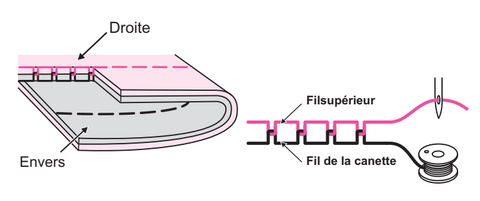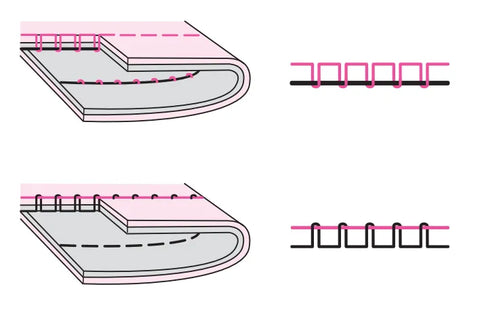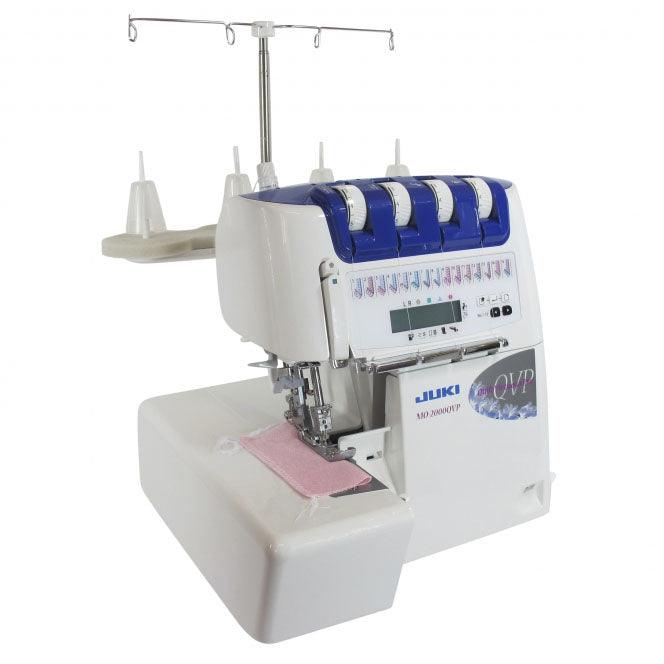table of contents:
Explore the essential world of the sewing machine bobbin with our informative guide. Discover the bobbin's crucial role in the sewing process, how it works, and learn how to handle it correctly for flawless results.

What is a can?
A bobbin is a small spool that fits into the bottom housing of a sewing machine. It is usually made of metal or plastic and is used to hold the lower thread. When the bobbin is properly inserted and loaded with thread, it forms a lower loop that intertwines with the upper thread from the top spool, creating a strong, even seam.

What is a can used for?
The bobbin is a vital part of a sewing machine. It plays a vital role in forming your stitches , providing the lower thread that intertwines with the upper thread on the sewing machine spool to create strong, even seams.
Housed in a suitable housing under the needle plate, usually near the feed dogs , the bobbin ensures a smooth and consistent feed of thread. It is often made of metal or clear plastic, with a slot that guides the thread as it is inserted. This system is crucial to avoid any risk of jamming, uneven tension or poorly formed stitches.
It is important to check the compatibility of the bobbin with your machine: each model requires a suitable bobbin , and using a different shape can affect its operation. To do this, refer to the page in your user guide or to the photos of the recommended model.
In practice, the bobbin rotates in its housing during sewing, synchronized with the movement of the needle and the feed dogs. The spool pin , meanwhile, feeds the upper thread, while the bobbin manages the lower thread; together, they create the loop that forms each stitch , whether straight, decorative, or reinforced.
When preparing a bobbin, it is essential to unwind the thread evenly and without excessive tension. A second pre-wound bobbin will save you time during your projects . Don't hesitate to prepare several in advance, especially if you are working with different colors or types of thread for a specific project.
Before each seam, remove the bobbin from its holder , check that it is properly threaded and that it turns freely. A well-positioned bobbin ensures a clean seam and a neat finish.
In short, the bobbin is a small part of the machine, but it plays a major role in the quality and reliability of your stitching. Learning to know it, insert it correctly and take care of it will lay a solid foundation for all your machine creations!

How to install a can?
To install the bobbin , start by placing the bobbin in the bobbin case , usually located under the needle . This area is accessible by removing the removable table if your machine has one. Check that the machine needle is in the up position by gently turning the handwheel , then insert the bobbin in the direction indicated. Pass the thread through the eye , then guide the thread through the needle plate , making sure it comes up to the presser foot .
Be sure to use the needle threader if necessary to make threading easier. A properly installed bobbin ensures proper upper and lower thread tension and will save you a lot of trouble. Improper placement can cause bobbin problems , such as loose thread or skipped stitches.
How to fill a can?
To fill a bobbin , you will need a bobbin winder , built into the top of the machine , as well as your spool of thread .
Start by inserting the spool of thread onto the spool pin , then thread the thread along the designated path to the bobbin winder . Wind the thread through the small hole in the bobbin, then position the bobbin on its spindle. Turn it clockwise to engage it. Then press the foot pedal or use the button provided to start winding . Once the bobbin is full, cut the end of the thread , then install it.
This simple but essential step ensures a consistent, ready-to-use thread. To further assist you, an explanatory video is often available on YouTube or through the manufacturer's resources. A good tip is to always keep a metal or plastic bobbin handy for your tests.
Why is the can important?
The bobbin plays a central role in every sewing project . It is responsible for feeding the lower thread , but also for maintaining the correct tension balance. A tension problem can occur if the bobbin is inserted incorrectly, if the spool thread is too loose, or if the bobbin is positioned crooked. This can directly impact the consistency of the stitches , especially if the upper thread tension is not correctly adjusted.
Properly adjusted tension between the top and bottom of the machine ensures a perfect stitch every time. This harmony between the thread in the eye , the needle plate , the needle bar and the presser foot is essential to the success of your projects.
What types of cans are there?
There are several types of bobbins , each suitable for a different machine model . Plastic bobbins are lightweight, translucent, and allow you to see how much thread is left. Metal bobbins are heavier and often used in industrial machines.
It is important to choose the right bobbin , compatible with your machine. A bobbin for your machine is always indicated in the manual or on the manufacturer's references . An incorrect choice can cause damage to the mechanism , damage the needle plate or jam the presser foot .
How to adjust bobbin tension?
Adjusting the tension is often overlooked, but it is crucial to ensuring smooth sewing. If the thread tension is too tight or too loose, stitches can become uneven or break. Properly adjusted tension ensures smooth operation and a clean seam.
This adjustment is especially important when you change fabric type , thread , or switch from a decorative stitch to a straight stitch .
How to avoid can problems?
To avoid bobbin problems , it is essential to follow a few simple rules. Use a bobbin that is compatible with your machine, insert it correctly in its slot to avoid a poorly positioned spool, respect the direction of rotation , and ensure balanced tension between the two threads. If you notice a loose thread , an unusual noise, or the stitch is not forming correctly, consider cleaning the machine .
A dirty bobbin case can prevent the thread from passing properly, as can thick or poor-quality black thread . If in doubt, consult your instructions or contact the brand's technical support team.













































Leave a comment
All comments are moderated before being published.
This site is protected by hCaptcha and the hCaptcha Privacy Policy and Terms of Service apply.